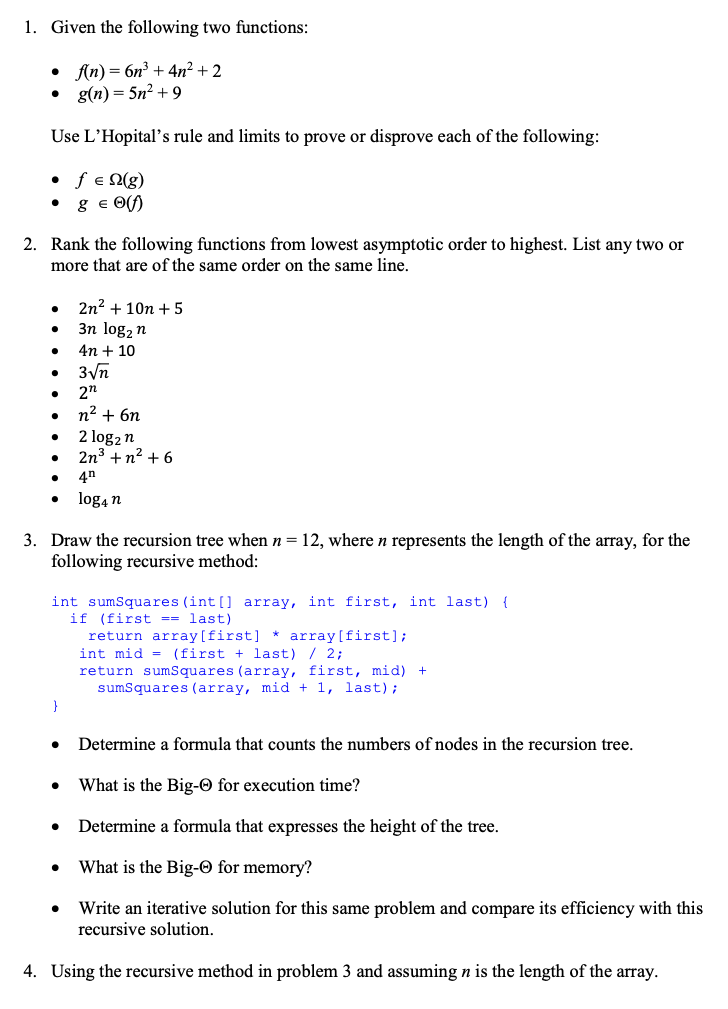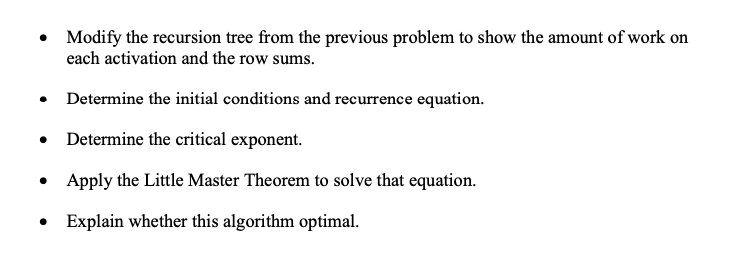Answered step by step
Verified Expert Solution
Question
1 Approved Answer
1. Given the following two functions: f(n) = 6n +4n +2 g(n)=5n +9 Use L'Hopital's rule and limits to prove or disprove each of


1. Given the following two functions: f(n) = 6n +4n +2 g(n)=5n +9 Use L'Hopital's rule and limits to prove or disprove each of the following: (g) 8 (f) 2. Rank the following functions from lowest asymptotic order to highest. List any two or more that are of the same order on the same line. 2n +10n +5 3n log n 4n + 10 3n 2" n + 6n } 2 log n 2n+n +6 3. Draw the recursion tree when n = 12, where n represents the length of the array, for the following recursive method: 4n log4n int sumSquares (int[] array, int first, int last) { if (first == last) return array[first] * array [first]; int mid (first + last) / 2; return sumSquares (array, first, mid) + sumSquares (array, mid+ 1, last); Determine a formula that counts the numbers of nodes in the recursion tree. What is the Big-O for execution time? Determine a formula that expresses the height of the tree. What is the Big- for memory? Write an iterative solution for this same problem and compare its efficiency with this recursive solution. 4. Using the recursive method in problem 3 and assuming n is the length of the array. Modify the recursion tree from the previous problem to show the amount of work on each activation and the row sums. . Determine the initial conditions and recurrence equation. . Determine the critical exponent. Apply the Little Master Theorem to solve that equation. Explain whether this algorithm optimal.
Step by Step Solution
There are 3 Steps involved in it
Step: 1

Get Instant Access to Expert-Tailored Solutions
See step-by-step solutions with expert insights and AI powered tools for academic success
Step: 2

Step: 3

Ace Your Homework with AI
Get the answers you need in no time with our AI-driven, step-by-step assistance
Get Started


